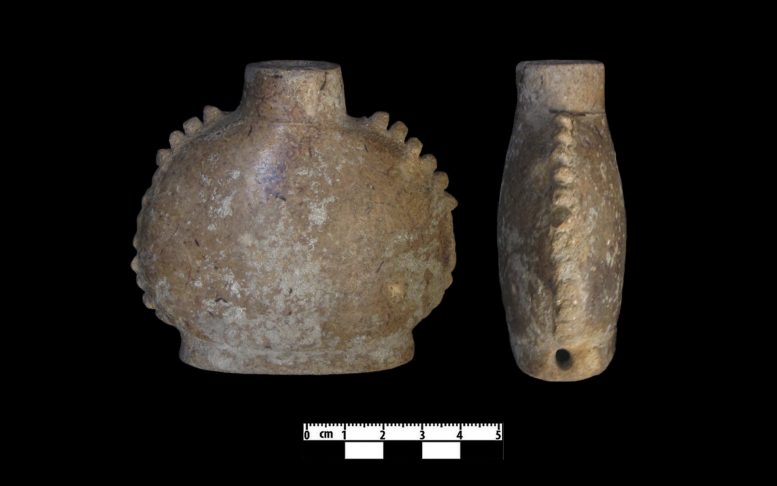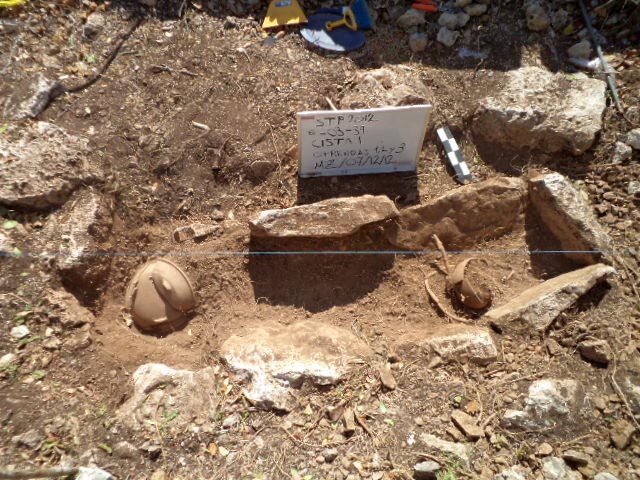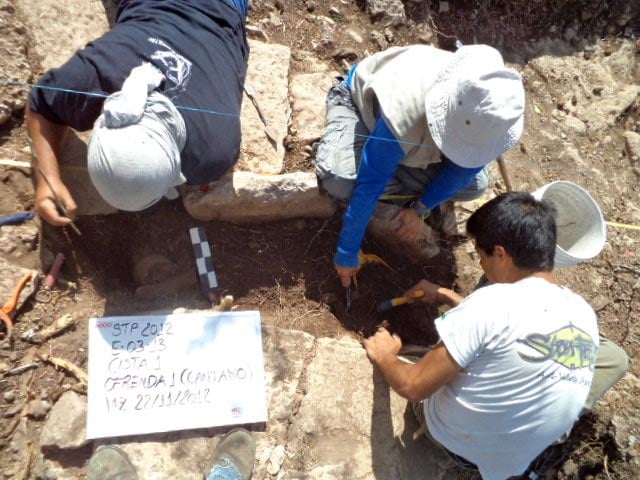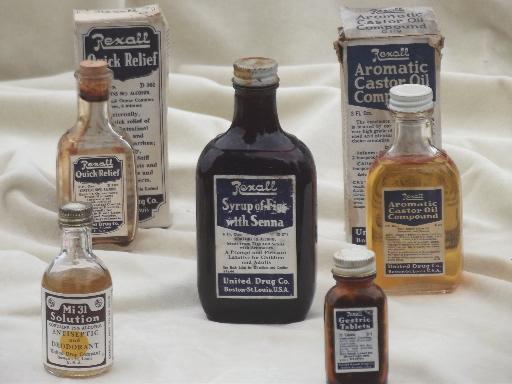
Posted on 01/15/2021 8:59:43 AM PST by Red Badger

Frontal and lateral view of a Muna-type (AD 750-900) paneled flask with distinctive serrated-edge decoration. Credit: WSU
----------------------------------------------------------------------------------------
Scientists have identified the presence of a non-tobacco plant in ancient Maya drug containers for the first time.
The Washington State University researchers detected Mexican marigold (Tagetes lucida) in residues taken from 14 miniature Maya ceramic vessels.
Originally buried more than 1,000 years ago on Mexico’s Yucatán peninsula, the vessels also contain chemical traces present in two types of dried and cured tobacco, Nicotiana tabacum and N. rustica. The research team, led by anthropology postdoc Mario Zimmermann, thinks the Mexican marigold was mixed with the tobacco to make smoking more enjoyable.
The discovery of the vessels’ contents paints a clearer picture of ancient Maya drug use practices. The research, which was published today (January 15, 2021) in Scientific Reports, also paves the way for future studies investigating other types of psychoactive and non-psychoactive plants that were smoked, chewed, or snuffed among the Maya and other pre-Colombian societies.

Maya cist burial with typical ceramic offerings – Plate covering the head of the deceased individual and cup placed likely with food. Credit: WSU
----------------------------------------------------------------------------------
“While it has been established that tobacco was commonly used throughout the Americas before and after contact, evidence of other plants used for medicinal or religious purposes has remained largely unexplored,” Zimmermann said. “The analysis methods developed in collaboration between the Department of Anthropology and the Institute of Biological Chemistry give us the ability to investigate drug use in the ancient world like never before.”
Zimmermann and colleagues’ work was made possible by NSF-funded research which led to a new metabolomics-based analysis method that can detect thousands of plant compounds or metabolites in residue collected from containers, pipes, bowls and other archaeological artifacts. The compounds can then be used to identify which plants were consumed.
Previously, the identification of ancient plant residues relied on the detection of a limited number of biomarkers, such as nicotine, anabasine, cotinine and caffeine.

PARME staff archaeologists excavating cist burial at the Tamanache site, Mérida, Yucatan. Credit: WSU
------------------------------------------------------------------------------------
“The issue with this is that while the presence of a biomarker like nicotine shows tobacco was smoked, it doesn’t tell you what else was consumed or stored in the artifact,” said David Gang, a professor in WSU’s Institute of Biological Chemistry and a co-author of the study. “Our approach not only tells you, yes, you found the plant you’re interested in, but it also can tell you what else was being consumed.”
Zimmermann helped unearth two of the ceremonial vessels that were used for the analysis in the spring of 2012. At the time, he was working on a dig directed by the National Institute of Anthropology and History of Mexico on the outskirts of Mérida where a contractor had uncovered evidence of a Maya archeological site while clearing lands for a new housing complex.
Zimmermann and a team of archeologists used GPS equipment to divide the area into a checkerboard-like grid. They then hacked their way through dense jungle searching for small mounds and other telltale signs of ancient buildings where the remains of important people such as shamans are sometimes found.
“When you find something really interesting like an intact container it gives you a sense of joy,” Zimmermann said. “Normally, you are lucky if you find a jade bead. There are literally tons of pottery sherds but complete vessels are scarce and offer a lot of interesting research potential.”
Zimmermann said the WSU research team is currently in negotiations with several institutions in Mexico to get access to more ancient containers from the region that they can analyze for plant residues. Another project they are currently pursuing is looking at organic residues preserved in the dental plaque of ancient human remains.
“We are expanding frontiers in archaeological science so that we can better investigate the deep time relationships people have had with a wide range of psychoactive plants, which were (and continue to be) consumed by humans all over the world,” said Shannon Tushingham, a professor of Anthropology at WSU and a co-author of the study. “There are many ingenious ways in which people manage, use, manipulate and prepare native plants and plant mixtures, and archaeologists are only beginning to scratch the surface of how ancient these practices were.”
Reference: “Metabolomics-based analysis of miniature flask contents identifies tobacco mixture use among the ancient Maya” by Mario Zimmermann, Korey J. Brownstein, Luis Pantoja Díaz, Iliana Ancona Aragón, Scott Hutson, Barry Kidder, Shannon Tushingham and David R. Gang, 15 January 2021, Scientific Reports. DOI: 10.1038/s41598-021-81158-y
PinGGG!........................
I wonder if they licked frogs.
That was the Fukawi Tribe...............
Who knew?
My guess is this was some kind of ‘medicine’, quite possibly a ‘purgative’.....................
Damn the CIA has been around for a long time.

I actually remember some of that!..............................
Thanks Red Badger.
Menthol...
I grow Mexican Marigold and other herbs alongside my veggies-it is not menthol-it has a Tarragon flavor-Tarragon does not grow all that well here-the Mexican Marigold does-I use it fresh fresh in any dish that calls for Tarragon-especially good with fresh green beans...
Mexican Marigold is grown and used by just about everyone around here as a culinary herb and ornamental plant-it adds the same flavor as Tarragon to dishes...
Not menthol-menthol (to paraphrase Whoopi-Whoopi) but the same function as menthol, to lower the harshness of the tobacco smoke.
Still, good to know, I may try growing some here in the high desert.
I don’t know how well it will do in that environment-but if you plant it in good soil away from a Western exposure-but plenty of sunshine-and water it every day a bit in Summer, it will probably do okay-it does freeze as soon as the temp goes into the high 20’s, so if you want to have it to use in food all year, put it in a really big pot and greenhouse it in Winter. It blooms in September here-pretty little orange flowers...
As an amateur ethnobotanist, I have been convinced for
many years that the many flowers and plants worn and carved on Mayan stele are not there just because they were pretty
but because of their use and effects.
Thanks!
The blue lotus is a popular motif in Egyptian texts and architecture.
It was used to treat erectile disfunction.
Which may have something to do with why the ‘little blue pill’ is blue!
Used in other lands as well.
You’re welcome-buena suerte...
Disclaimer: Opinions posted on Free Republic are those of the individual posters and do not necessarily represent the opinion of Free Republic or its management. All materials posted herein are protected by copyright law and the exemption for fair use of copyrighted works.